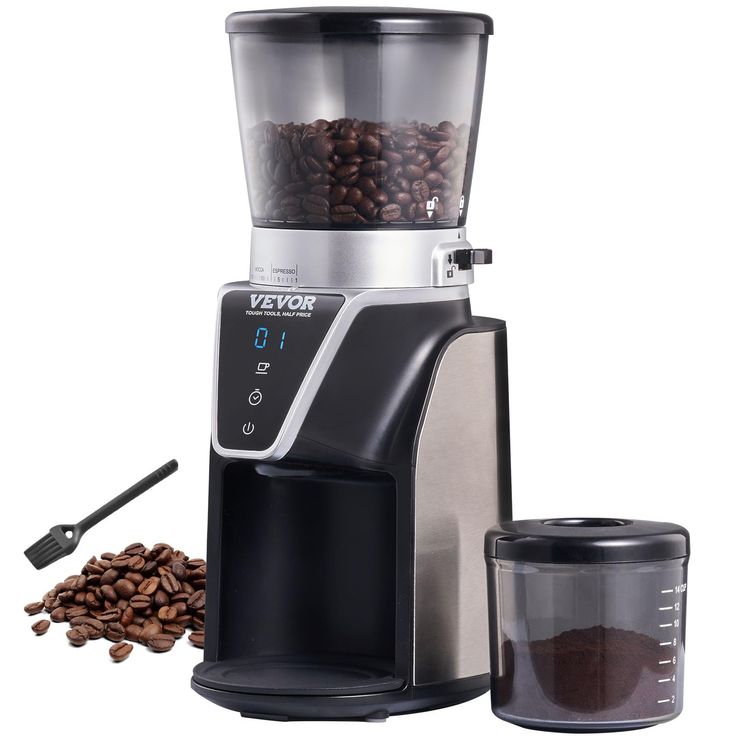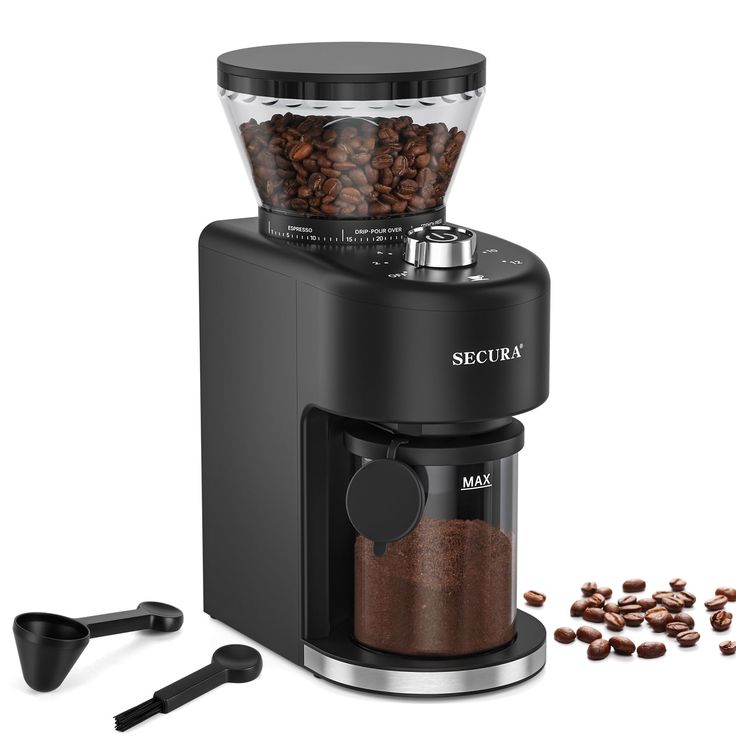Overview of Static in Coffee Grinders
How to reduce static in coffee grinder? Dealing with static in coffee grinders can be frustrating, but understanding it is the first step toward managing it effectively. Static electricity in coffee grinders occurs from the friction between coffee beans and the grinder’s parts. This static can cause coffee grounds to stick to the grinder, bin, and even cause a mess on your countertop.
Causes of Static Electricity in Grinders
Static electricity primarily occurs due to friction. As coffee beans pass through the grinder, they rub against the burrs and the grinder walls. This friction causes the beans to gain or lose electrons, leading to an electric charge. This imbalance in charges generates static electricity. Additionally, the type of material from which the grinder is made can influence the amount of static produced. For instance, grinders with plastic components often generate more static compared to those made with metal.
Effects of Static on Grinding and Coffee Quality
Static electricity in coffee grinders can negatively impact both the grinding process and the overall quality of your coffee. One direct consequence is the messy splatter of coffee grounds around your work area, which can be annoying to clean. More critically, static causes the grounds to stick to the sides of the container and not all of them make it into your brew. This can lead to inconsistent coffee strength and flavor, as the precise amount of coffee intended for brewing is not entirely used. Also, the clinging of fine coffee particles can affect the grinder’s performance over time, potentially leading to uneven grind sizes.

The Ross Droplet Technique Explained
Coffee aficionados have found a clever way to combat static in their grinders. It’s known as the Ross Droplet Technique, a simple yet effective solution to an age-old problem.
Origins and Development of the Technique
The home barista community coined the term after David Ross, who first suggested the idea in 2005. It gained traction on home-barista.com forums, where users attested to its effectiveness.
Step-by-Step Guide to Applying the Ross Droplet Technique
Here’s how to apply this technique:
- Start with a few drops of water – no more than what would cover the tip of a spoon.
- Stir the water into the beans using anything from a stick to the back of a spoon.
- Ensure the water is evenly distributed among the beans.
- Immediately grind the beans after this treatment to prevent any flavor loss.
By following these steps, the moisture helps neutralize the static charge, reducing the mess created by flying coffee grounds during grinding. Keep in mind to use only a tiny amount of water to avoid damaging your coffee grinder.
Alternative Methods to Manage Static
In addition to the Ross Droplet Technique, other methods can help minimize grinder static.
Adjusting Grinding Technique
To reduce static, consider these adjustments:
- Grind patiently: After grinding, wait a few minutes before removing the grounds. This lets static dissipate.
- Tap the container: Firmly tapping the grinder or coffee bin may loosen clinging grounds.
- Dryer environments: Static is worse in dry conditions. Operate your grinder in a more humid area if possible.
These tips offer simple changes that can make a big difference.
Choosing the Right Grinder Material
The grinder’s material can affect static. Here are options to consider:
- Metal grinders: These often generate less static than plastic ones.
- Ceramic burrs: Like metal, ceramic can reduce static in comparison to plastic.
- Quality components: High-quality grinders with better construction materials can minimize static build-up.
Investing in a grinder with the right material can help keep your coffee-making space clean.

Preventive Measures and Best Practices
Prevent static in coffee grinders by adopting routine care and suitable storage practices.
Routine Cleaning and Maintenance Tips
Regular cleaning is key to preventing static. Here are some tips:
- Clean after each use: Always empty and wipe down the grind chamber to remove residual coffee grounds.
- Use a soft brush: Clean the burrs and chamber with a soft brush to avoid coffee residue that can create static.
- Wipe external surfaces: Regularly clean external parts with a slightly damp cloth to keep the grinder dust-free.
These steps help maintain your grinder and reduce static issues.
Optimal Storage Conditions for Grinders
Proper storage also plays a critical role in minimizing static buildup. Follow these guidelines:
- Store in a cool, dry place: Keep your grinder away from moisture and direct sunlight.
- Use a closed cabinet: Storing your grinder in a cabinet protects it from dust and other environmental factors.
- Ensure the grinder is unplugged: Always disconnect your grinder when not in use to safeguard its components.
By following these storage tips, you can enhance your grinder’s lifespan and performance, reducing static complications.
Understanding the Impact of Environmental Factors
Environmental factors play a pivotal role in the static buildup of coffee grinders.
Influence of Humidity and Temperature
The level of humidity in the environment directly affects static in grinders. High humidity levels can reduce static because the moisture in the air makes it more conductive. This helps to dissipate static charges more efficiently, preventing the coffee grounds from flying around. Conversely, low humidity conditions, often found during winter, can worsen the static situation by making the air drier and less conductive.
Seasonal Variations in Static Issues
Static issues in coffee grinders can also vary with the seasons. During colder months, the indoor air tends to be drier, especially in heated homes. This dryness increases the likelihood of static buildup. In contrast, the warmer, more humid months of summer may see a decrease in static problems. Adjusting your grinding practice according to these seasonal shifts can mitigate some of the static challenges experienced throughout the year.

Advanced Tips for Serious Baristas
How to reduce static in coffee grinder? For baristas who are serious about their craft, static in coffee grinders is more than a nuisance; it’s a hurdle to the perfect cup. If you’ve tried the basic methods and are looking for advanced ways to reduce static, this section is for you.
Use of Anti-Static Additives and Accessories
One advanced method is to use anti-static additives or accessories specifically designed for coffee grinders. These additives often come in the form of sprays that you can apply to the beans before grinding, which can help neutralize the charges that cause static. Alternatively, consider anti-static grinder liners or mats that can reduce static buildup in the bin or grinding area.
- Anti-static sprays are easy to apply and effective.
- Grinding mats or liners can catch stray grounds and minimize mess.
- Some grinders come with built-in anti-static coatings or materials.
- Anti-static coffee brushes can help clean and dissipate charges.
By using these specialized products, you can keep static at bay and ensure that your coffee grounds behave.
Customizing Grinding Processes for Low Static
To further reduce static, baristas can customize their grinding processes. This might include adjusting the grind time, the rate at which beans are fed into the grinder, or even modifying the environment in which you grind.
- Experiment with shorter grind times to see if static reduces.
- Try different bean feeding speeds for optimal results.
- Use a humidity-controlled environment to grind beans.
- Work on a metal surface to help disperse static electricity.
Combining these advanced tips with thorough cleaning, the right storage, and an understanding of environmental factors will take your coffee grinding to the next level, cutting down on static and enhancing the quality and consistency of your brews.